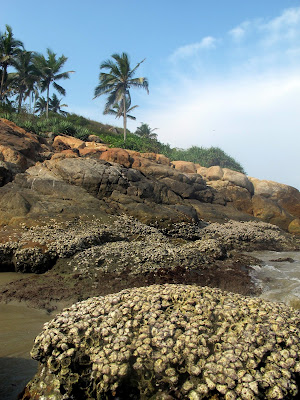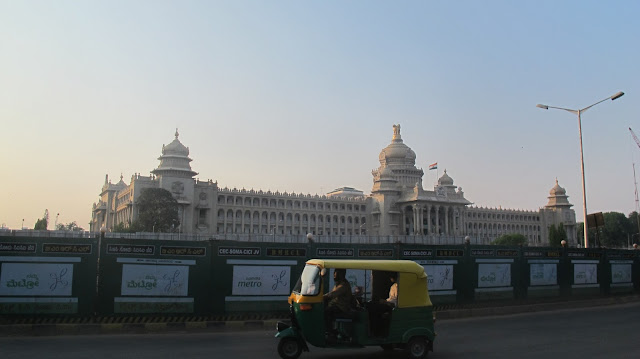 |
| The World is Your Mirror. |
This post is a follow on to my blog post about Ashram
life. Please bear with me as I am not the most eloquent writer.
The world Ashram is defined as a place for religious
retreat or community life. The piece that I loved the most about being in an Ashram
was the sense of community that was present. Unfortunately we live in a time of
isolation, fear of what and who we don’t know, where the sense
community has been lost. We tend to put up barriers to ‘strangers’, our own
internal defenses, and even physical fences & walls. Proof to this
statement is the sad fact that even after living in the same flat in San
Francisco for 3 years I don’t know my neighbors. I travel the world solo
without fear, but I can’t even knock on my neighbor’s door. We live in the same
building for goodness sake. Why do I have this fear in my own community? How
come this fear is driving us? Here’s something that Amma had to say about the
current time we are living in that resonated with me:
“We are currently living in the Kali Yuga (the dark age
of materialism guided by our ego). Dharma is at an all-time low. We are
surrounded on all sides by war, violence, disease, hostility, famine,
overpopulation and environmental destruction. Amma says repeatedly, “The world
is caught in the grip of an octopus of fear.” People are becoming more and more
isolated from themselves and each other. The balance of nature is greatly
disturbed. The seasons rarely come on time. There are droughts, floods, storms,
earthquakes and tsunamis causing great destruction.There was a time when humans and nature co-existed in
perfect harmony. Now, our ignorance and our separation from our true Self and
from nature have greatly disturbed that balance.”
I know that all sounds very negative and scary, but it’s
reality. The beautiful part about our reality is that we have the ability to
bring the balance back. Reconnect with ourselves, with nature and those around
us. Live our lives out of love rather than fear. Smile more often at stranger,
say hello, look them in the eyes, what’s the worst that could happen? Just
being seen can make the world of a difference to somebody.
One of my favorite documentaries that my flatmate, Julia, showed me is called Happy. It taps
right into the importance of community and how having a sense of community is
what brings true happiness. Not travel, money, cars or experiences, but the
people around you who you build a community with. Those you can lean on. That’s
one of the reasons I believe religion is popular, it truly brings people together.
That’s a whole another discussion. Anyway where I am trying to go with this is
my decision to make my community a priority. I vow to be a better neighbor and
member of my SF community.
Spend the 60 minutes to watch this beautiful film. Happy
has stuck with me and I think it will with you too.
There’s another beautiful thing I noticed at a couple of
the Ashrams. The pure genuine love that can radiate from one’s smile and gaze.
There were two individuals in particular that come to mind and I can’t seem to
get there smile out of my head. I want that connection to my heart that they
have, where they can spread love so easily and without fear. I don’t even know
how to smile the way they do. It’s such a pure honest expression with no walls
up. Just from one smile they can pierce straight to your heart and remind you its
okay to be exactly who you are. Relax and let your guard down.
One of the reasons I think I can’t stop thinking about it
is because it made me realize how much love I hold back. They smile at you and
I can only hold their gaze for a couple seconds before I look away. Anybody
else felt this as well? It makes me realize how important it is to share love.
Share love with those close to you and let them know how much they mean to you.
There is a quote from Shantaram that I love:
“I know now that when the loving, honest moment comes it
should be seized, and spoken, because it may never come again. And unvoiced,
unmoving, unlived in the things we declare from heart to heart, those true and
real feelings wither and crumble in the remembering hand that tries too late to
reach for them.”
When your heart wants to speak, seize the opportunity.
Let that other person know your true feelings.
I was discussing all of this with my new friend, Myriam, and she
brought to my attention the 3 different types of love
Eros is known as "erotic
love". It is based on strong feelings toward another. It usually occurs in
a romantic relationship.
Philos is the second type of
love. Its a unique kind of love, like the love that one has for a friend, to
love like a brother or like a sister. When we have Philos love for someone we
have placed that friend in a high personal position.
Agape is unconditional universal
love. Agape love is above Philos and Eros love. It is a love that is totally
selfless, where a person gives out love to another person even if this act does
not benefit her/him in any way. Whether the love is returned or not, the person
continues to love (even without any self-benefit).
We were specifically talking about Agape love. How when somebody
can shine so bright with their smile that you feel love come through. There are
moments when you want to tell somebody that you love them and truly care about
them, but if you said “I love you” it would freak them out. When in reality
this is Agape or Philos love you’re trying to express. Or even when you smile at a random person on the street, sometimes they will smile back or may look at you a bit sideways. Agape love is wonderful
and it would be beautiful to see more of this love in the world. Smile more
often, let your love and light shine out! (even if you freak a few people out
along the way).
Life is beautiful. Be Present. Be Curious. Challenge
Yourself. Leap.

































































